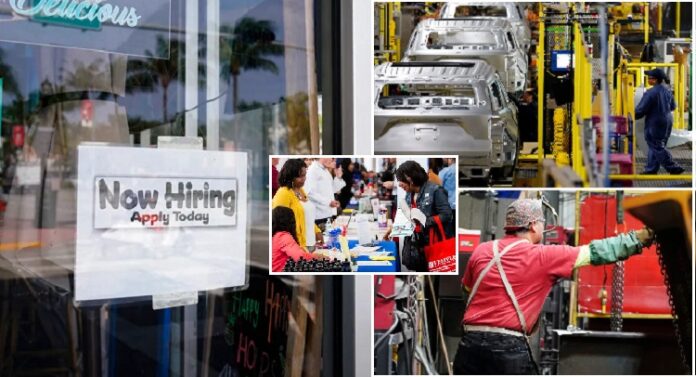
| Translate This News In |
|---|
In a surprising turn of events, the U.S. job market witnessed remarkable growth in September, defying economists’ expectations. The latest Jobs report from the U.S. Bureau of Labor Statistics revealed the addition of a staggering 336,000 new jobs during the month. This unexpected surge in job growth came as a pleasant surprise, especially when forecasts had anticipated around 170,000 new jobs.
Key sectors that contributed significantly to this impressive job expansion included leisure and hospitality, healthcare, education, and professional services. While various labor market data reports this week painted conflicting pictures, this substantial increase in nonfarm payrolls undoubtedly stood out.
As per Jobs Report the unemployment rate held steady at 3.8 percent. Over the past 18 months, the unemployment rate has consistently remained within the historically low range of 3.4 percent to 3.7 percent.
This strong job growth carries significant implications for Federal Reserve monetary policy in the coming months. The labor market’s tightness suggests that the Fed may need to carefully consider its approach to interest rates and its potential impact on inflation.
Despite this robust job market, there are signs of stabilization. Average hourly earnings grew by 0.2 percent month-on-month, similar to August but slightly below expectations of 0.3 percent. Wage growth remained robust, with wages rising by 4.2 percent over the past 12 months to reach $33.88 per hour. While this represents a sharper annual increase than inflation, it is slightly lower than the wage growth seen in the 12 months ending in August. Additionally, the monthly increase in wages remained flat at 0.2 percent.
There are indications that robust job postings may be luring workers back into the labor force, contributing to the uptick in the unemployment rate in recent months. However, the overall labor force participation rate and the rate for prime-age workers (those between 25 and 54 years old) remained unchanged in September.
The September jobs report marks 33 consecutive months of job gains and serves as a political victory for President Biden as he seeks reelection. Various service-related industries, including leisure and hospitality, government, healthcare, professional and technical services, and social assistance, witnessed substantial job gains. The leisure and hospitality sector, in particular, returned to pre-pandemic levels, adding 96,000 jobs in September.
Despite this impressive job growth, it has not resulted in significant wage inflation. However, economists suggest that robust job postings are luring workers back into the labor force, contributing to the uptick in the unemployment rate in recent months.
While these job gains are promising, there are headwinds in the form of potential government shutdowns and labor strikes. A looming government shutdown in November and ongoing labor strikes, including those in the entertainment and auto industries, could impact consumer spending and potentially lead to layoffs.
This year has seen one of the largest waves of strikes since 2000, with more than 445,000 workers involved in work stoppages. Financial hardship combined with a tight labor market has prompted many workers to take action.
While the job market appears resilient, the Federal Reserve faces challenges in managing inflation and maintaining economic stability. The Fed’s interest rate hikes have aimed to cool off consumer demand and potentially slow wage gains, but strong job growth continues to be a factor.
The jobs market’s future remains uncertain, with interest rates, government actions, and labor strikes all playing significant roles in shaping the economic landscape. The Fed’s decisions in the coming months will be closely monitored to gauge their impact on the labor market and the broader economy.

















